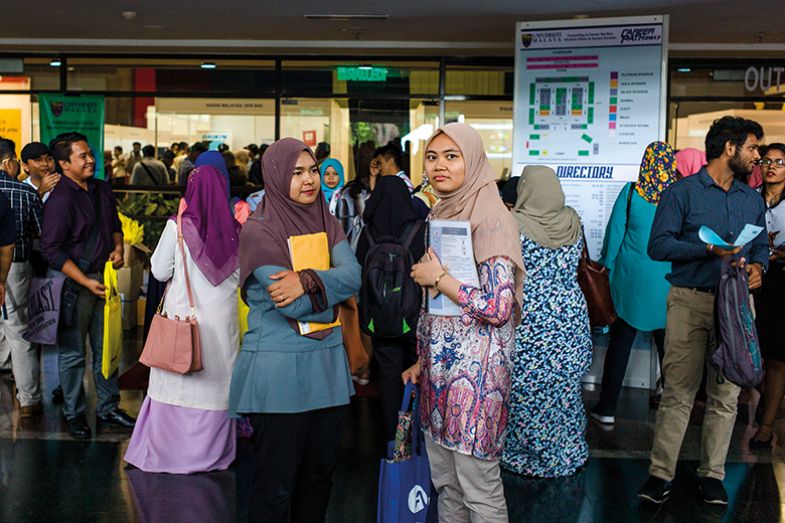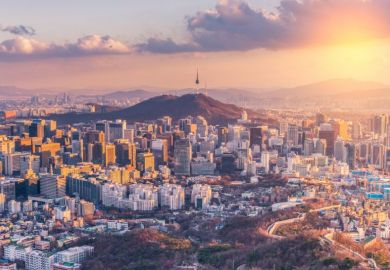Browse the full THE Asia-Pacific University Rankings 2019 results
Several momentous events and decisions made by external parties have had major impacts on the University of Malaya (UM) in the 21 years that I have been an academic. Of these events, two in particular stand out.
The first decision, made in 2006 by the then Ministry of Higher Education, created what are now called Research Universities (RUs). UM was one of four of Malaysia’s 20 public universities that were given this status and block grants as a result (a fifth institution was added several years later).
The creation of RUs has been credited with transforming research and development in Malaysia; some 70 per cent of Malaysia’s publication output now comes from these five research universities, with UM the clear leader in quantity and quality.
The second decision, made in 2012, gave “autonomy” to these five RUs. Having been shackled by countless Civil Service circulars for years, institutions initially welcomed this announcement. But, within a few years, the euphoria dissipated when the implications of the so-called “autonomy” sank in. Operating budgets of the five RUs were drastically cut, affecting UM the most.
UM’s operating budget was RM622 million (£118 million) in 2012. Immediately after the granting of autonomy, this was cut by 8 per cent to RM573 million in 2013. It now stands at RM405 million in 2019 or just 65 per cent of the 2012 figure, despite inflation, better performance in research and rankings and increasing demands from the Ministry of Education.
Successive vice-chancellors had always been aware that sooner or later these budget cuts would happen but no one anticipated the scale and speed of the declines.
View this year’s Asia-Pacific University Rankings methodology in full
As a result of these funding cuts, UM has lost good international and contract staff, decreased travel allowances and reduced essential maintenance of buildings and equipment.
However, UM also started to scale up its dreams.
About 20 years ago, a private medical wing called the UM Specialist Centre was set up to prevent medical lecturers from leaving for the private sector. An oil palm plantation of 1,000 acres provided a modest but steady income for the university and a Centre for Continuing Education proved to be a profitable (albeit on a limited scale) enterprise in the burgeoning private education market.
Other than these few small-scale initiatives, nothing further developed at UM until around 2008 when the realisation set in that these few programmes could not offer the kind of financial sustainability that was required of a large Malaysian university.
Download a copy of the Asia-Pacific University Rankings 2019 digital supplement
So, in 2012, a private university licence was sought and granted by the government. Thus was born the International University of Malaya-Wales, a collaborative venture between UM and the University of Wales Trinity St David. Grand plans to set up a UM Health Metropolis, which was to combine private health care with retail and hotel businesses; develop a 120-acre piece of UM land; and expand UM’s oil palm plantation business were also mooted. UM Holdings was mandated to take all these plans forward.
Unfortunately, most of these plans failed to take off. The UM Health Metropolis plan was not well received by nearby residents, whose objections led to its delay. Expansion of the oil palm plantation proved to be problematic because it was difficult to find suitable cheap acreage necessary for this to work. It was also difficult to find business partners for the development of the 120-acre piece of land. To top it all off, changes in the university’s senior leadership team resulted in more delays. Meanwhile, an appeal to the Ministry of Education to allow home student fees to increase (as they had not been reviewed for 20 years) was rejected even though fee subsidies had reached unsustainable levels of 90 to 97 per cent.
Government policies have hobbled and impeded UM’s efforts to evolve, even though autonomy was promised in 2012. Deficit budgets have been the norm for UM over the past seven years and reserves, which had taken decades to accumulate, were almost completely depleted at the end of 2018.

What then are the lessons to be learned? First, the best-intended plans will not work without competent people to carry them out. Second, plans need to be realistic and must factor in time and money for the unexpected. Third, continuity within top management is critical to see ambitious plans through. And fourth, government policies on investments and spending need to help rather than hinder universities’ efforts to become sustainable.
It seems counter-intuitive that UM budgets are being cut at a time when UM, ostensibly Malaysia’s best university, is on the ascent. UM’s standing in the world has never been better and research and development is finally working. It is difficult to explain the rationale behind such decisions and making do seems to be the order of the day. It is generally hoped that this storm will come to pass and that the government will consider restoring UM’s budget to pre-2012 levels.
Awg Bulgiba Awg Mahmud is professor in the department of social and preventive medicine at the University of Malaya. Professor Awg Bulgiba was deputy vice-chancellor (academic and international) from 2015 to 2018.
POSTSCRIPT:
Print headline: Hard lessons to learn
Register to continue
Why register?
- Registration is free and only takes a moment
- Once registered, you can read 3 articles a month
- Sign up for our newsletter
Subscribe
Or subscribe for unlimited access to:
- Unlimited access to news, views, insights & reviews
- Digital editions
- Digital access to THE’s university and college rankings analysis
Already registered or a current subscriber?








